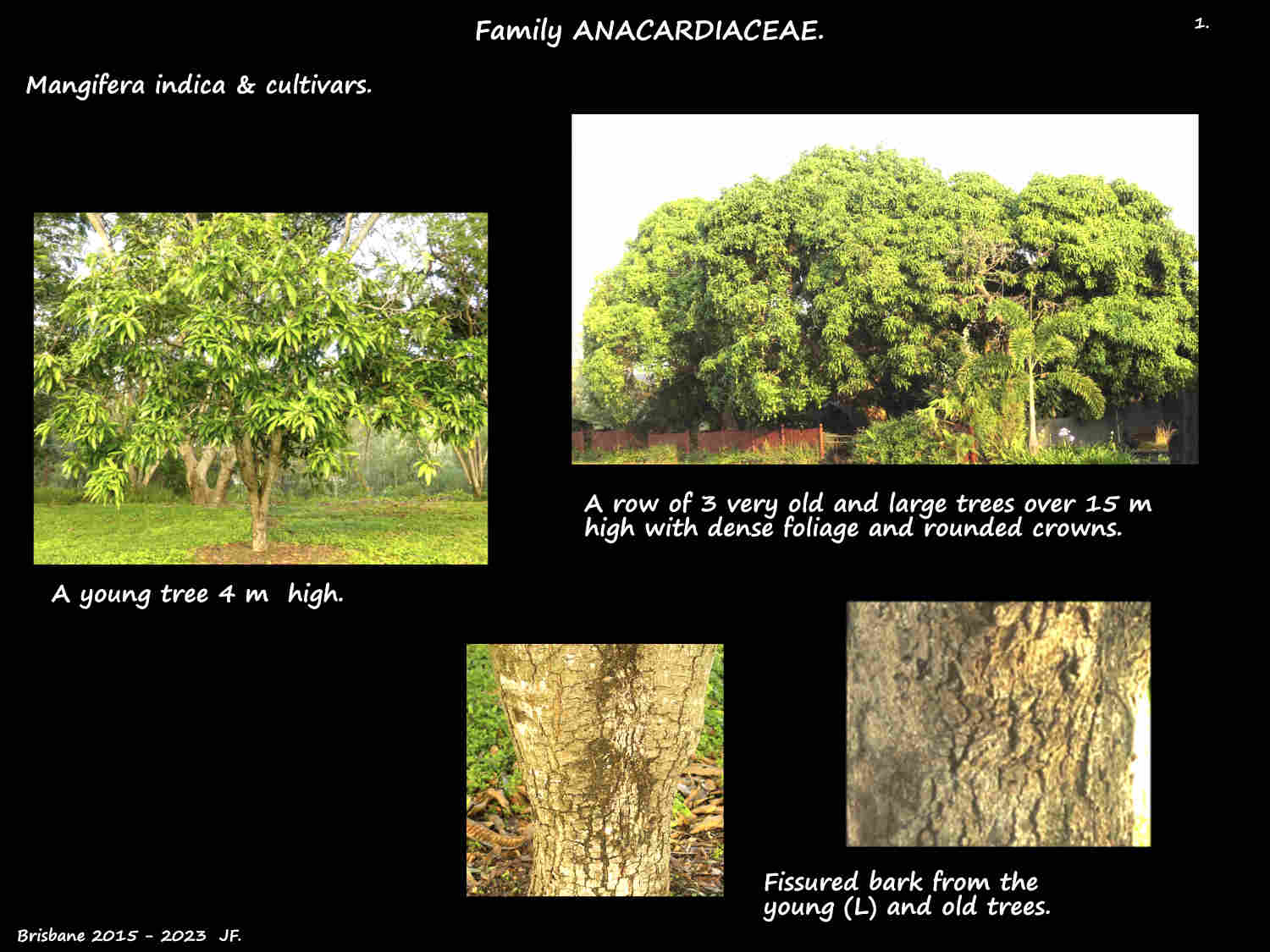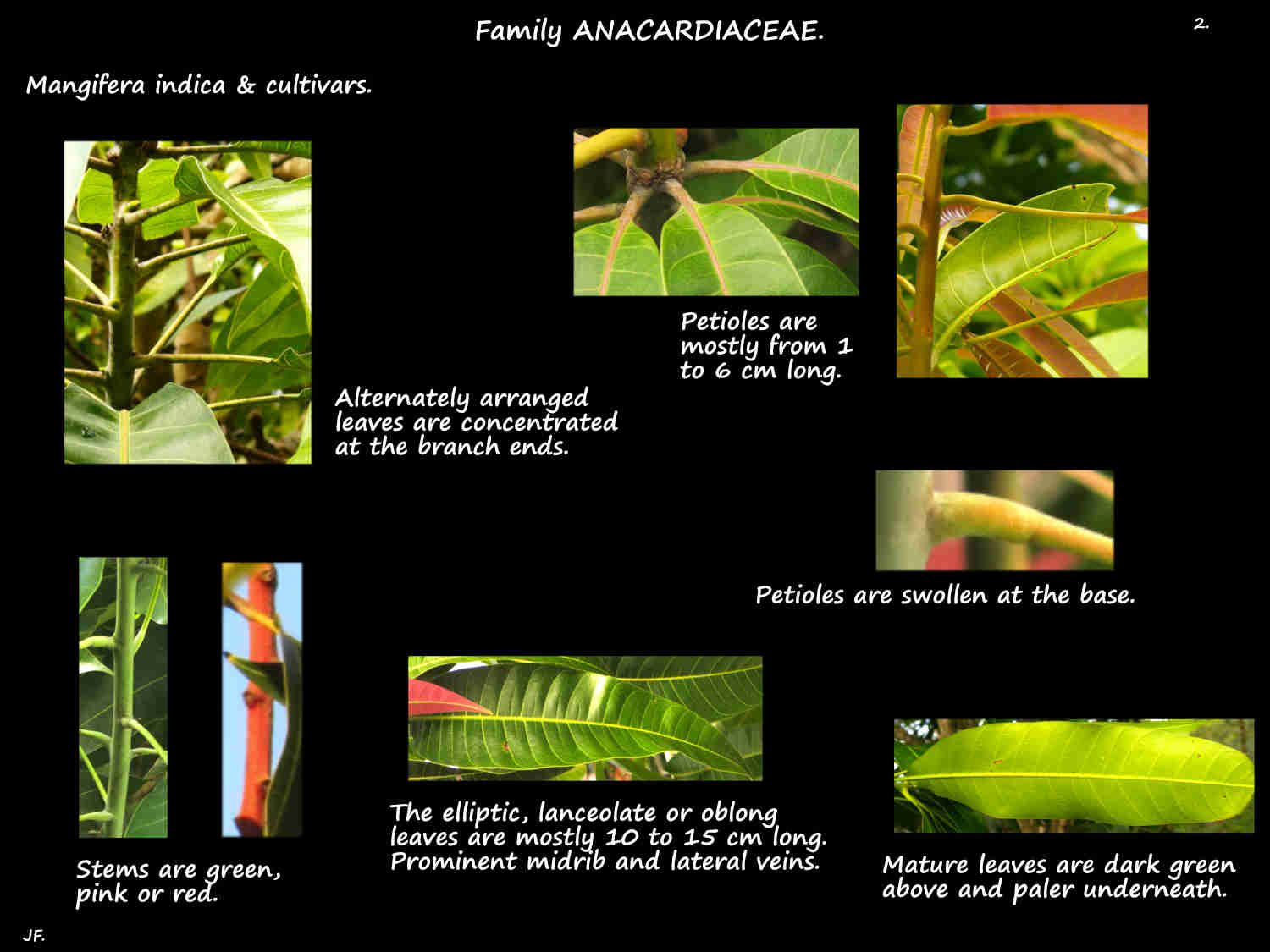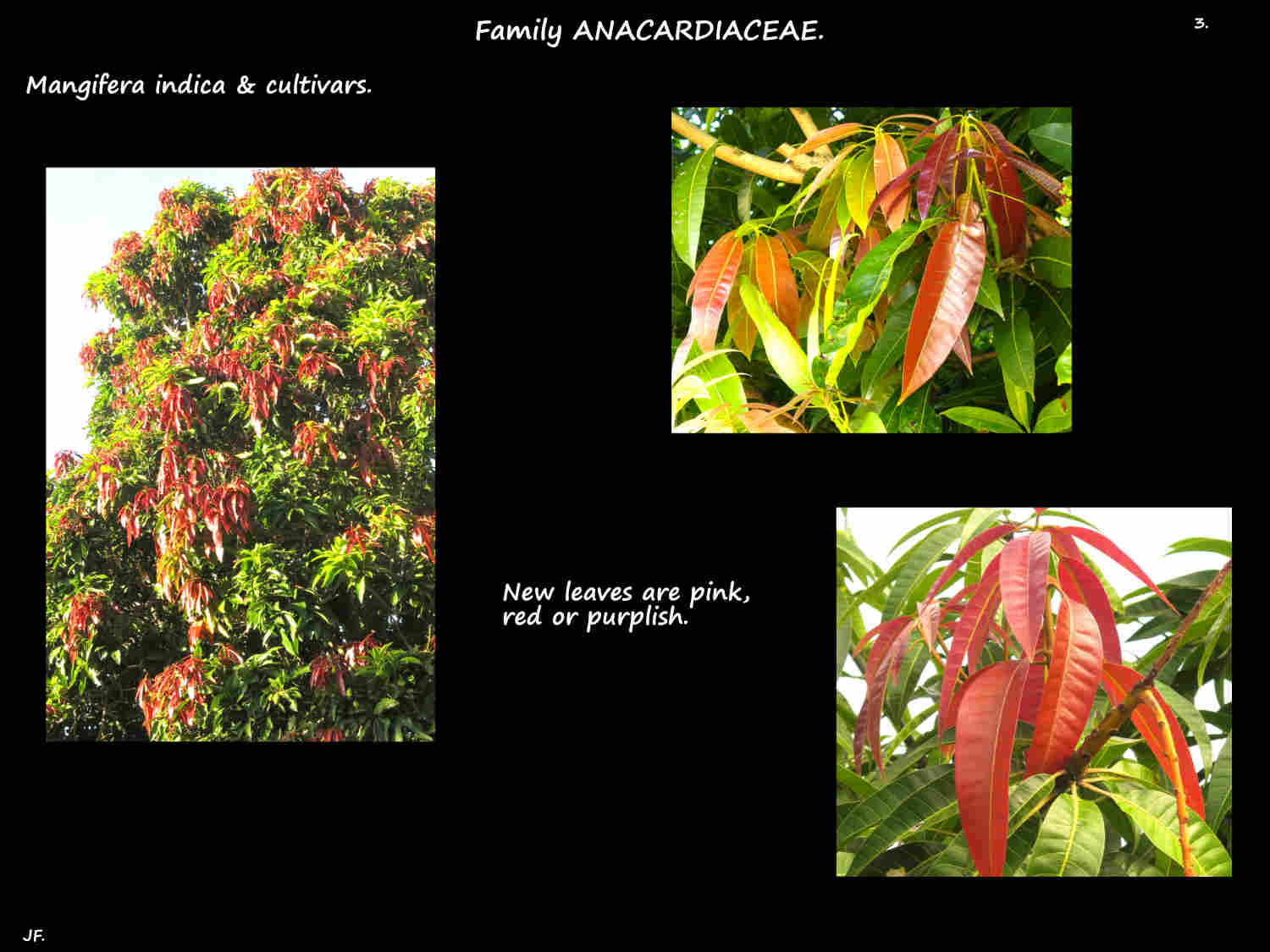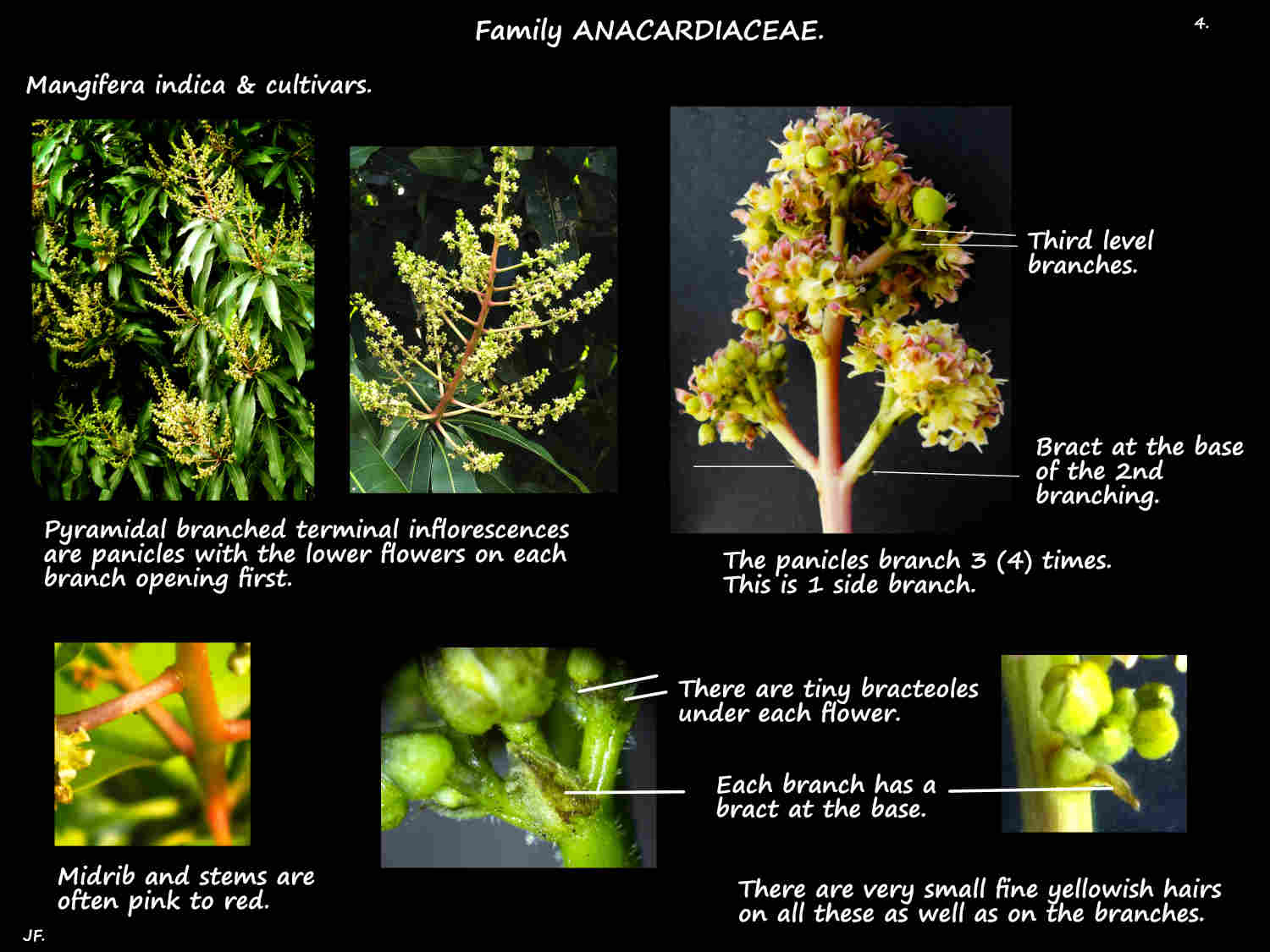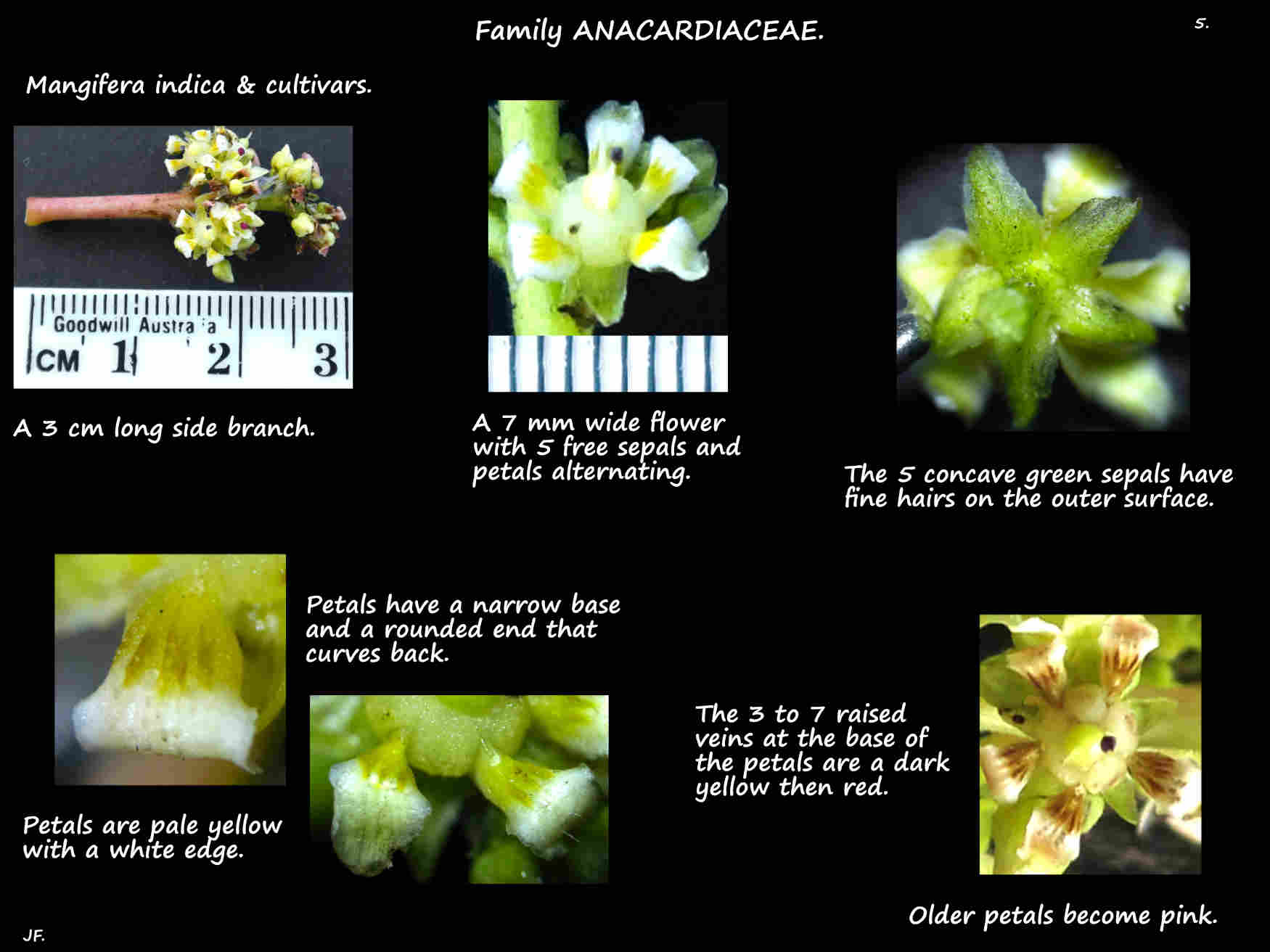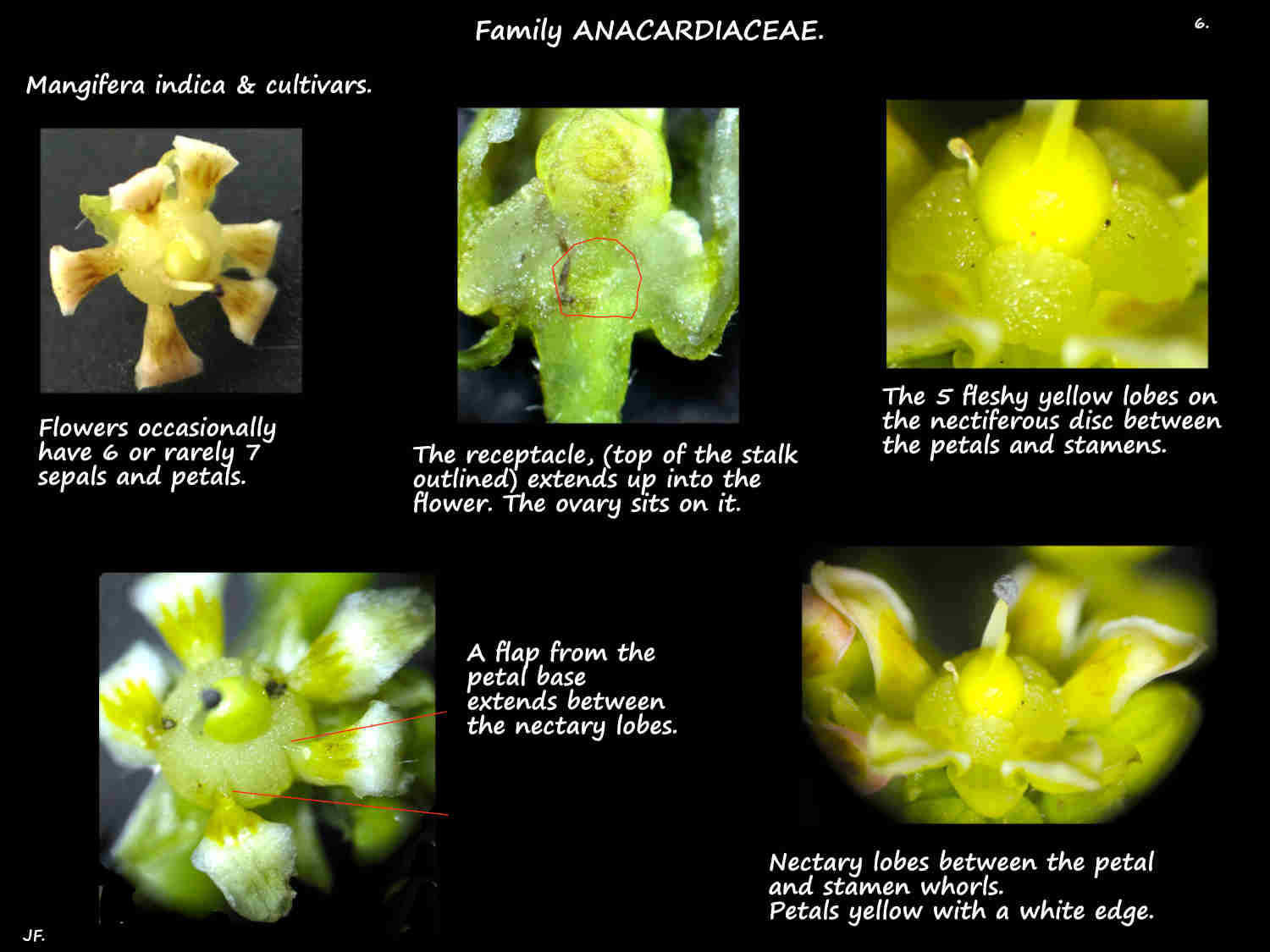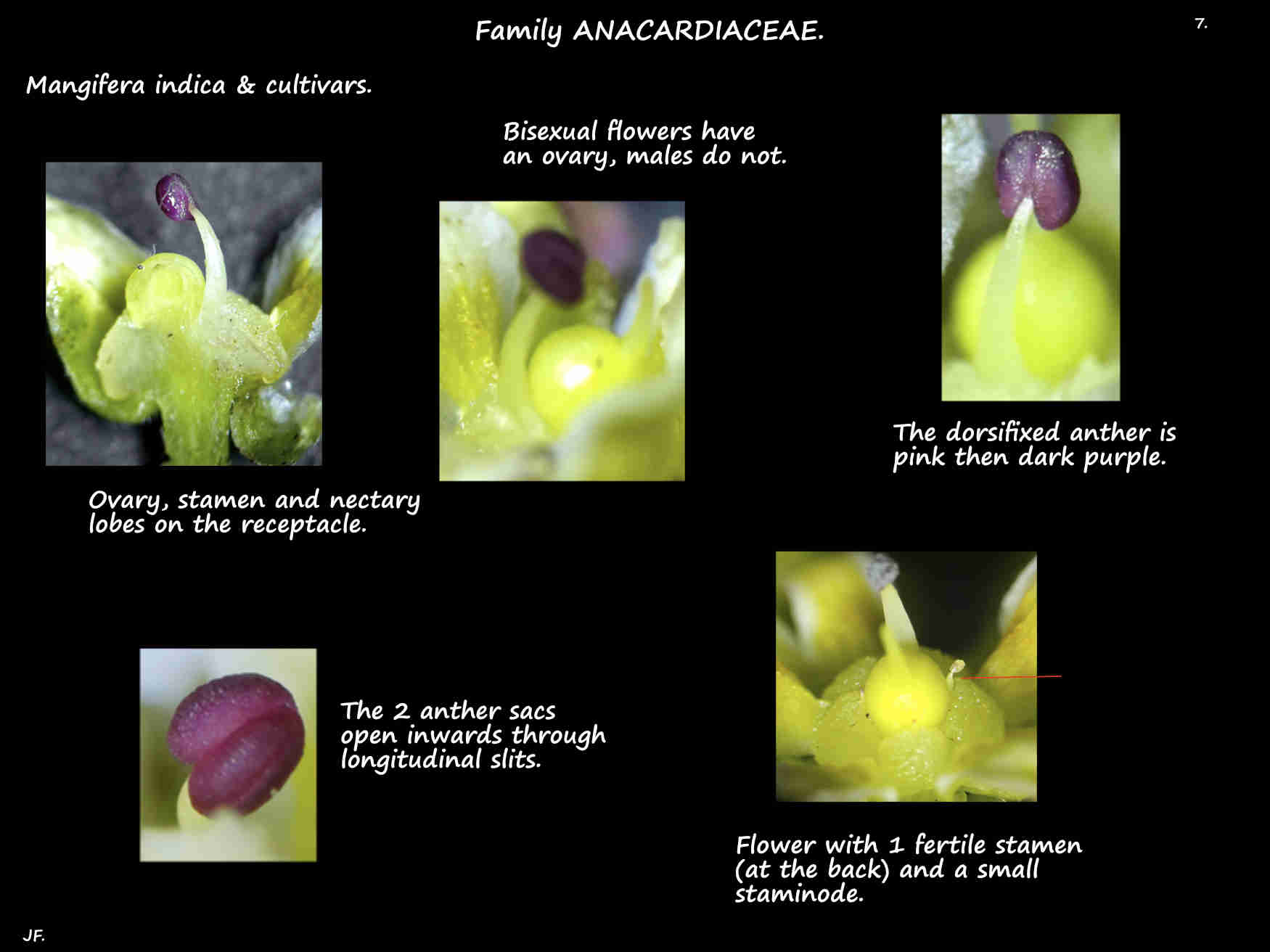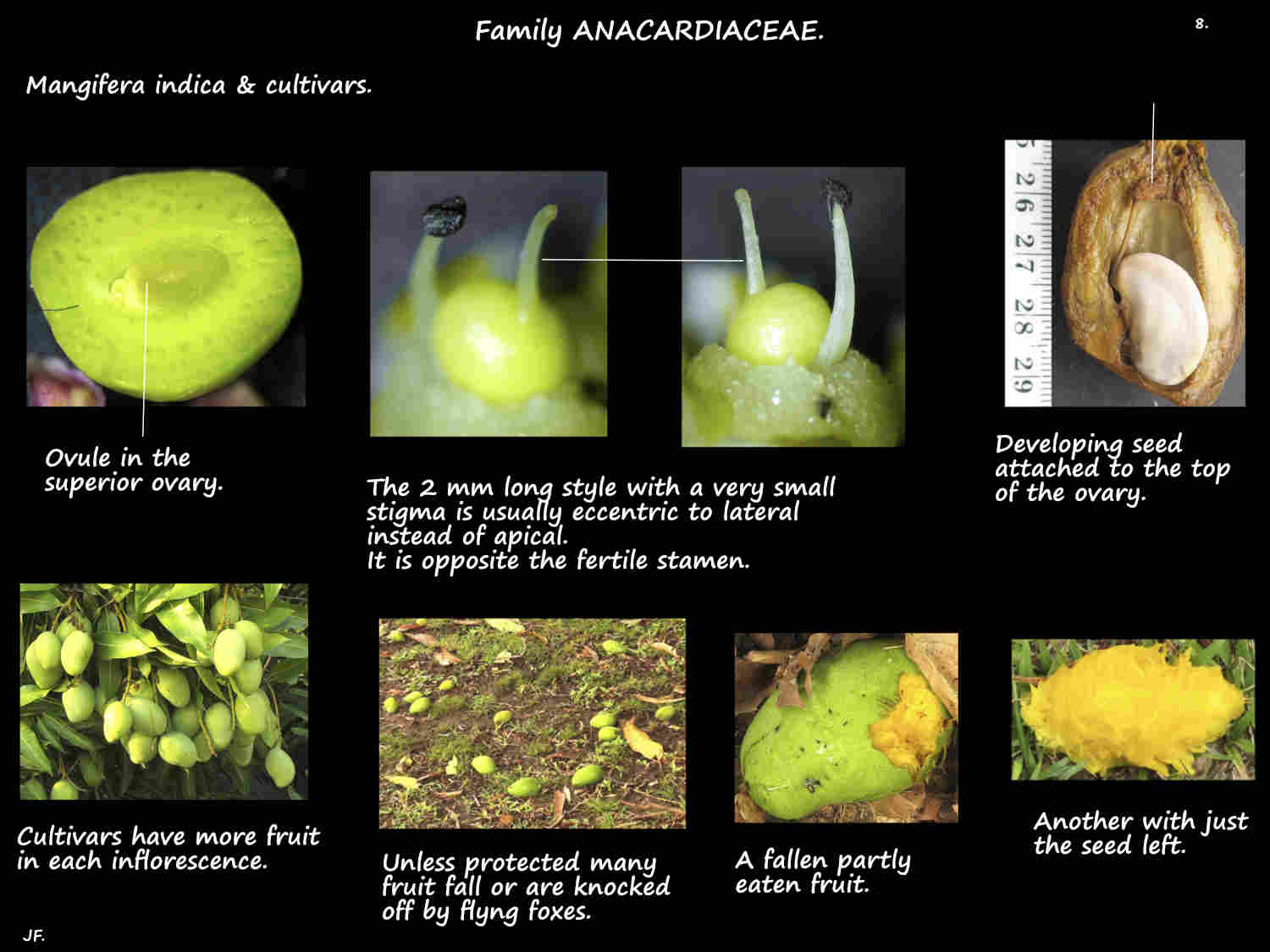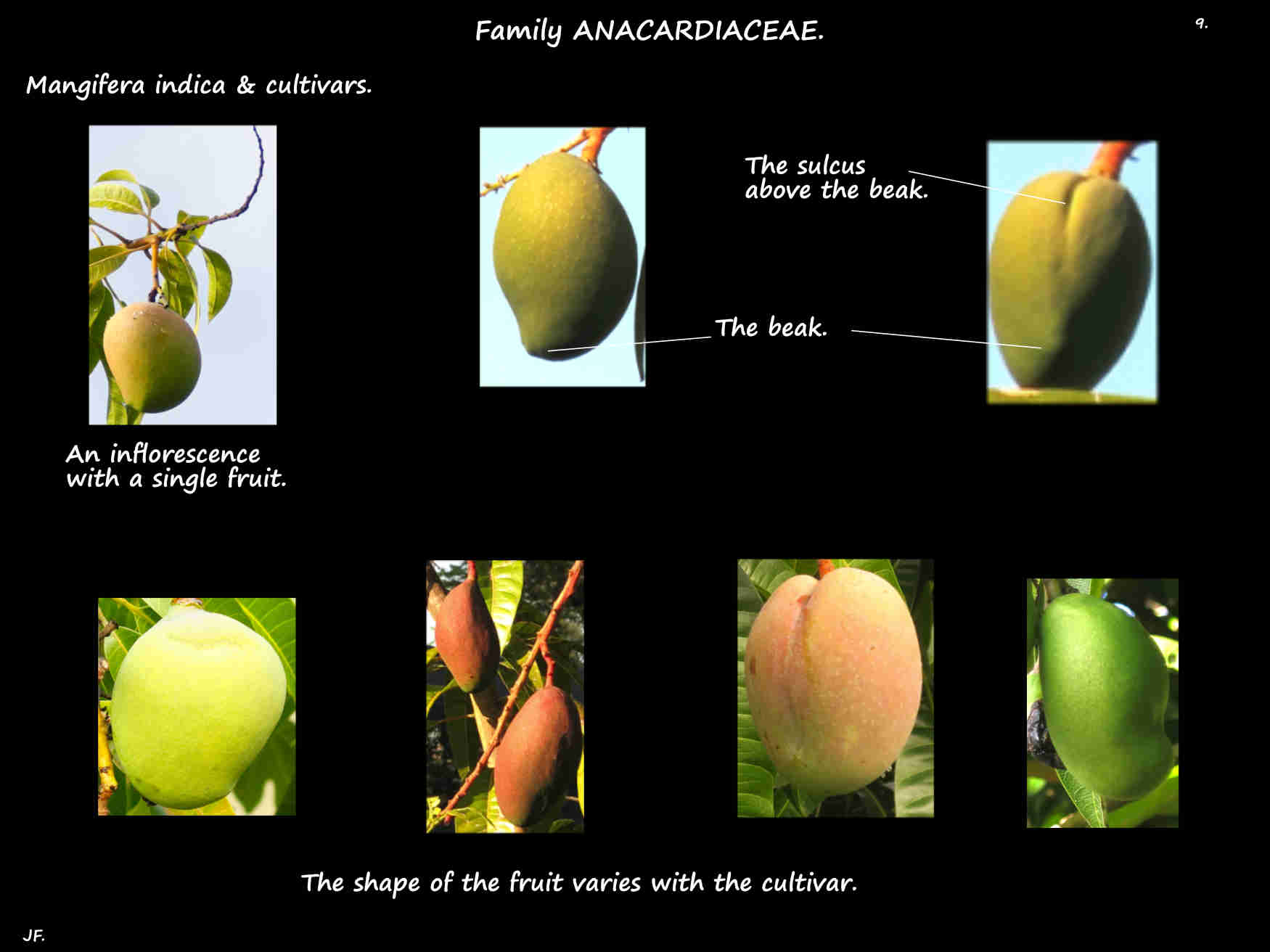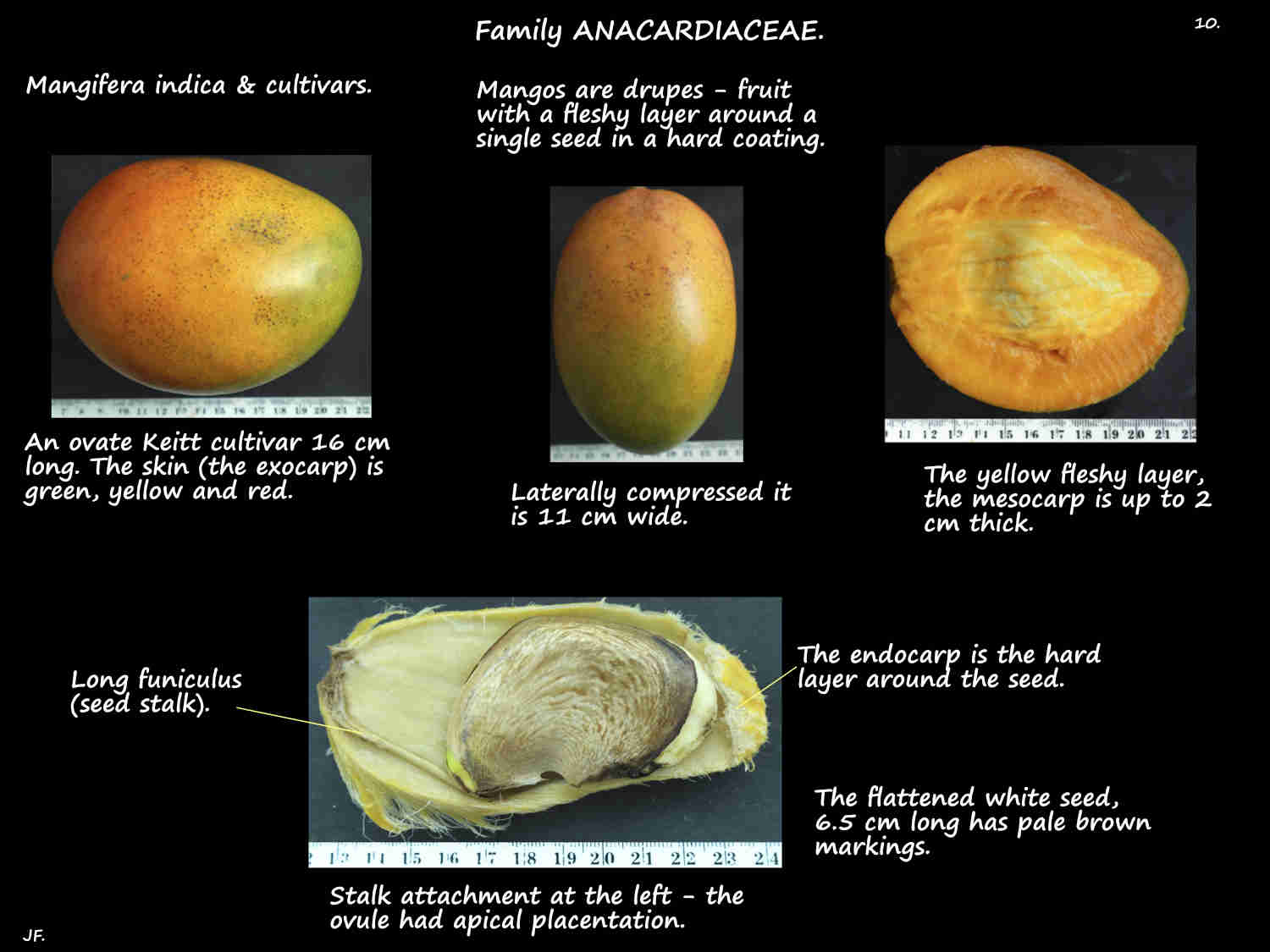Mangifera indica.
Mangifera indica is naturalised in Queensland.
Cultivated trees are mostly up to 10 to 15 m high but in the wild they can reach 30 m with a 4 m thick trunk.
Mostly up to 1 m thick the trunk has fissured grey-brown bark.
With side branches starting 2 m up the trunk they have a rounded crown and dense foliage.
Young branchlets have very small, fine yellow-brown hairs which are lost on older branches.
The simple, alternately arranged leaves are often concentrated at the branch ends.
They are on a petiole up to 6 (10) cm long with a grooved upper surface and a swollen base.
The blades are around 10 to 15 (35) cm long and up to 10 cm wide.
The mostly oblong to lanceolate or elliptic blades are sometimes sickle-shaped.
The tip is pointed and the wedge shaped base is sometimes asymmetric.
The smooth edge may be wavy and there are no hairs.
The midrib is prominent on both sides as are the up to 25 pairs of lateral veins.
New green leaves become reddish or purplish then mature to a shiny dark green above with a paler lower surface.
The erect terminal inflorescences, commonly around 25 cm long may reach 50 or 60 cm.
They are conical to pyramidal, 3 times branched panicles with hundreds of small flowers.
The pink or red midrib and branches have a varying amount of tiny yellow hairs.
At the base of each branch is a yellowish finely hairy lance-shaped bract a few mms long.
The 4 mm long flowers are on a stalk or pedicel around 2 mm long.
The pedicels have 3 bracteoles at the base that are similar to the bracts.
Flowers have parts in 5’s.
The following describes bisexual flowers.
Flowers are around 8 mm across.
There are 5 free green concave ovate to lanceolate sepals with a pale edge.
They are 2 to 3 mm long with a pointed tip and fine yellowish hairs on the outer surface.
The 5 free petals, 3 to 4 mm long have a narrow base and a broad end with a round or pointed tip.
Slightly longer than the sepals they spread out then curve back.
Initially cream or yellowish they later become pink.
From the base of the inner surface a flap of petal extends between the lobes of the nectary disc.
There are 3 to 7 prominent raised darker yellow or reddish veins on the inner surface.
Between the petals and stamens is a pale yellow nectiferous disc around 2 mm high.
It may be a complete ring or 5 separate fleshy lobes that alternate with the petals.
Inside the disc are 5 stamens but only 1 (2) is fertile with the rest reduced to 1 mm staminodes.
The stamen has a slender filament 5 mm long that holds the anther just past the petals.
The young pink anther becomes dark purple as it matures.
The superior green ovary, 1.5 mm high usually has 1 locule.
The style, around 2 mm long has a single tiny stigma.
The style is not apical but off centre or lateral on the side opposite the fertile stamen.
(Male flowers have no ovary.)
The panicles only have a few bisexual flowers with the majority being infertile males.
This results in only 1 or 2 fruit on each panicle (cultivars have more bisexual flowers and fruit).
The fruit are drupes that vary in shape and size.
They can be oblong or ovate and often compressed laterally while some are round.
Including cultivars they can be from 6 cm to well over 15 cm long and weigh 1 to 2 Kg.
The skin is a mix of green, yellow, orange and red and the flesh is yellow to orange.
Seeds have a hard flattened ovoid coat up to 8 cm long.
There are hundreds of cultivars but only 9 are grown commercially in Australia with 90 % being the Kensington or Bowen Pride.
Others include the Calypso, RE2, Kent, Keitt with a few Honey Gold and Palmer.
J.F.

